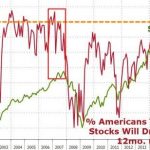Speaking this week at the Bloomberg New Energy Finance conference in New York, Total SA’s chief energy economist, Joel Couse, forecasted that EVs will make up 15 to 30 percent of global new vehicle sales by 2030.
Oil demand for transportation fuel see its “demand will flatten out,” after 2030, Couse said. “Maybe even decline.”
Colin McKerracher, head of advanced transport analysis at Bloomberg New Energy Finance, sees Couse’s forecast as the highest EV sales margin yet to be forecasted by a major company in the oil sector.
“That’s big,” McKerracher said. “That’s by far the most aggressive we’ve seen by any of the majors.”
Royal Dutch Shell Plc sees a similar trend with oil demand in transportation flattening out in the near future. Chief Executive Officer Ben van Beurden said in March that oil demand may peak in the late 2020s. In November during an interview, Shell CFO Simon Henry said that demand is expected to peak in about five years.
Shell and Total SA have been looking to diversify their energy assets through hydrogen as a transport fuel. In January, both companies joined a global hydrogen council that included Toyota, Liquide SA, and Linde AG. The companies will be investing about $10.7 billion in hydrogen products over the next five years.
Like hydrogen fuel cell vehicles, electric vehicles have major walls to climb to find mass adoption in vehicle sales and infrastructure. One barrier is the cost of owning an electric vehicle versus a cheaper, comparable gasoline-engine vehicle. The battery pack in an EV can be quite expensive, making up half the cost of the car, according to BNEF.
Backers of EVs point to two trends fast approaching the market; with one being the longer range, 200-plus-miles per charge EVs coming to market like the Chevy Bolt and Tesla Model 3. The higher-priced versions of the Tesla Model S and Model X are thought to be a sign of it, with consumers willing to finance or lease one of these EVs to gain access to more power and longer range.












Leave A Comment